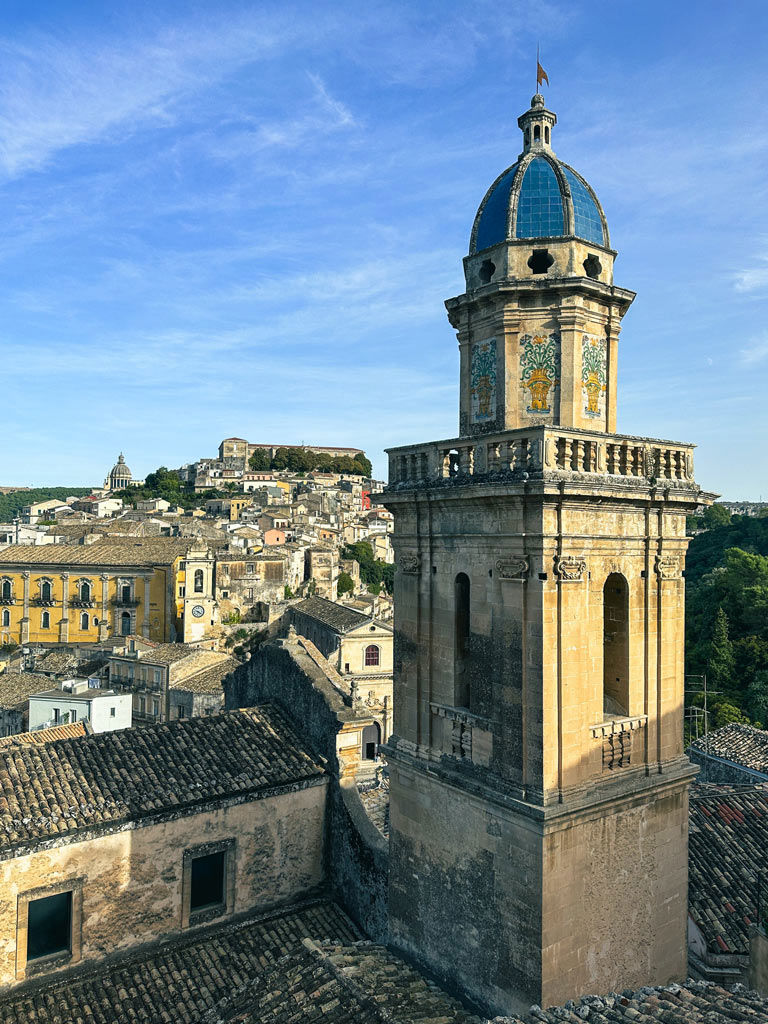

Taormina’s public and religious urban buildings were built using a mixture of styles, telling us a lot about all the dominations that passed through this part of Sicily. Important traces of the Greek and Roman periods can be found in the archaeological park that houses the ancient theater, the history museum, and the red-brick Naumachie. The Cathedral and the Castle of Monte Tauro, an ancient fortification that houses the Museum of the Sicilian Middle Ages, date from the medieval period.
The Municipal Villa is the most picturesque place in town, a true urban green lung built by Lady Florence Trevelyan, including a pine forest, an odor garden, a scenic avenue, water mirrors, and exotic pavilions, the "Beehives," built for bird watching and the tea ritual.
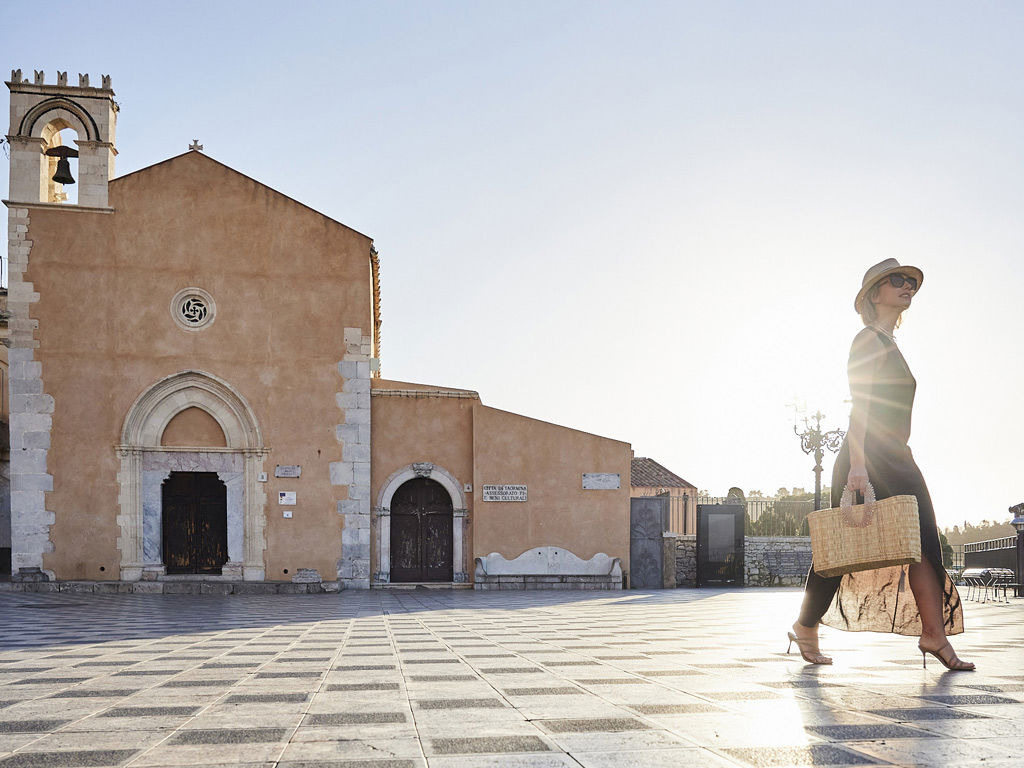
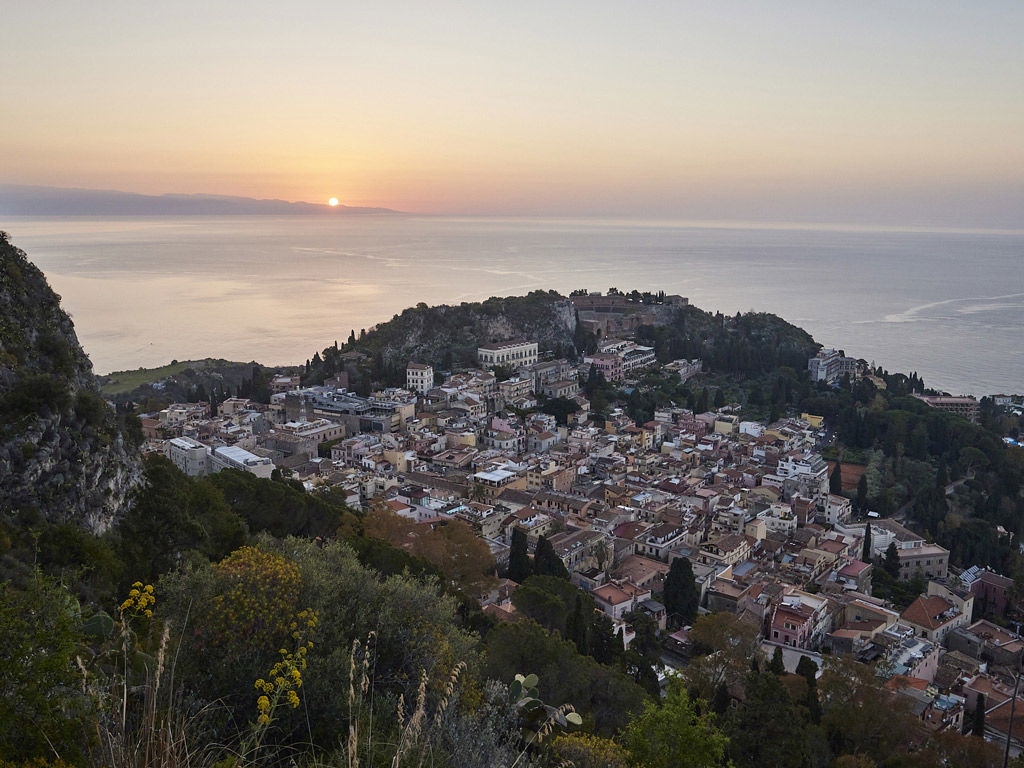
Strolling along Taormina's main street Corso Umberto I, will delight you with wonder: passing through craft stores, luxury boutiques, typical restaurants and bars where you can taste Sicily's best granitas, facades of countless churches, Baroque fountains, and historic palaces, such as Palazzo Corvaja is a beautiful everyday experience.
Taormina is also synonymous with nature and sea, with its coves of golden sand, protected by rocky promontories, where you can dive in crystal-clear waters or live some days of pure relaxation at the iconic Isola Bella, which is connected to the beach by a thin tongue of sand. With its rich Mediterranean and subtropical vegetation, it has been declared a nature reserve by the WWF and can be reached from the town on foot or by cable car.
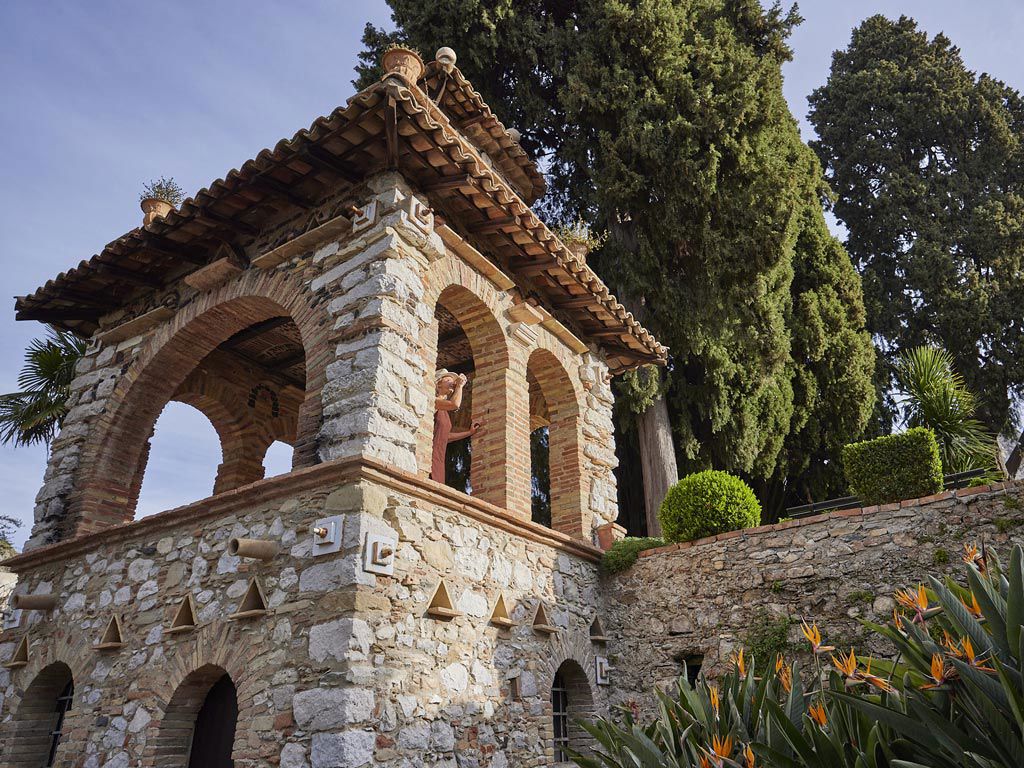
Taormina boasts one of the best-preserved Greek theaters in Sicily, a must-see destination for history and culture lovers. It was one of the stops of young aristocrats during their Grand Tour from the second half of the 1700s.
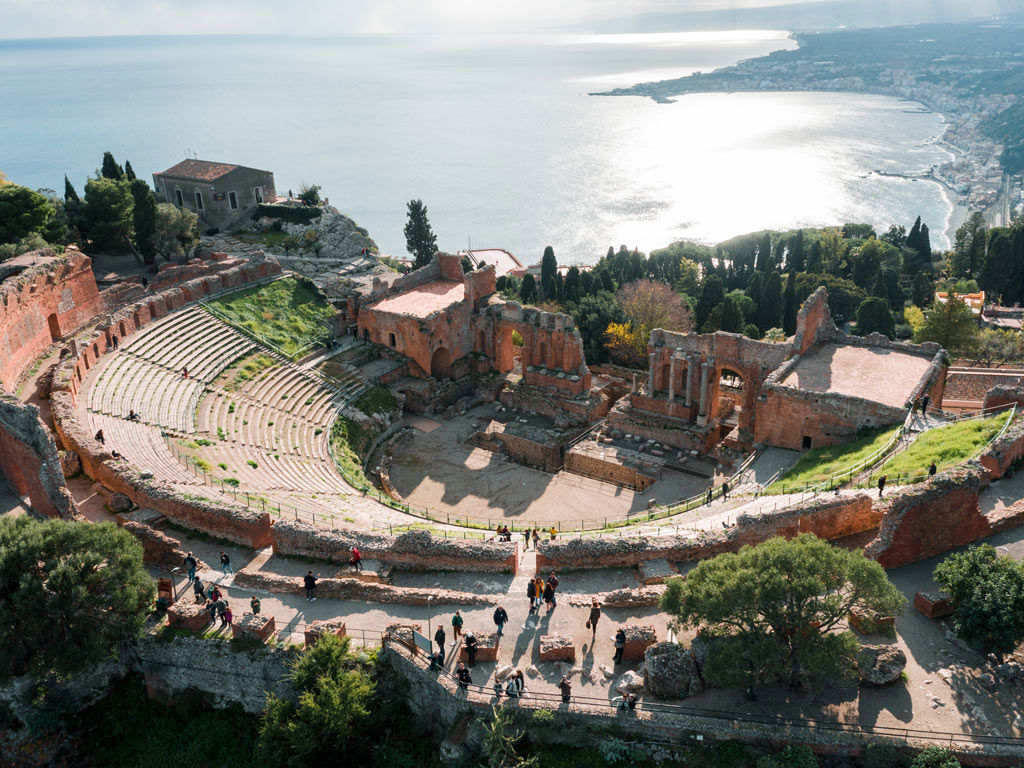
For those who love outdoor activities, Taormina boasts several bicycle touring routes of different lengths and intensities, to explore the area from different perspectives.

A jewel in the crown of the Ionian coast, Giardini Naxos is one of the most popular tourist resorts in eastern Sicily, just a 15-minute drive from Palazzo Vecchio Taormina.
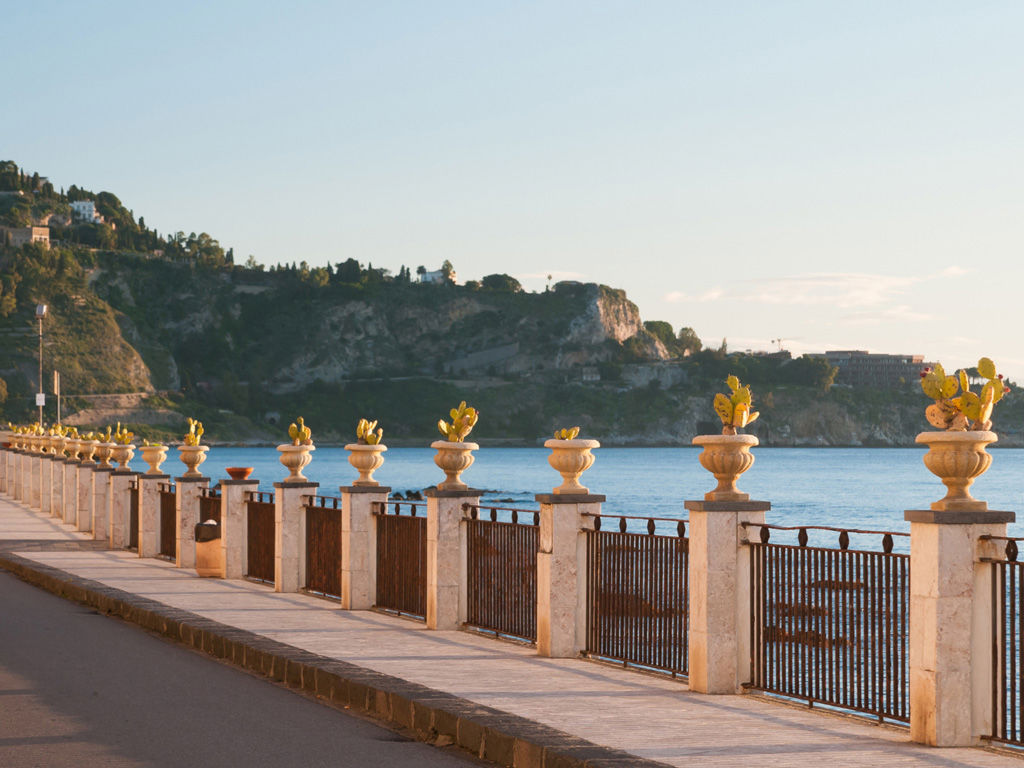
Mount Etna, or Mongibello, has shaped the territory of eastern Sicily with its volcanic activity for millennia, becoming one of its most iconic local symbols. Because of its high scientific-cultural value and incredible botanical and zoological variety, it was listed as a UNESCO World Heritage Site in 2013.
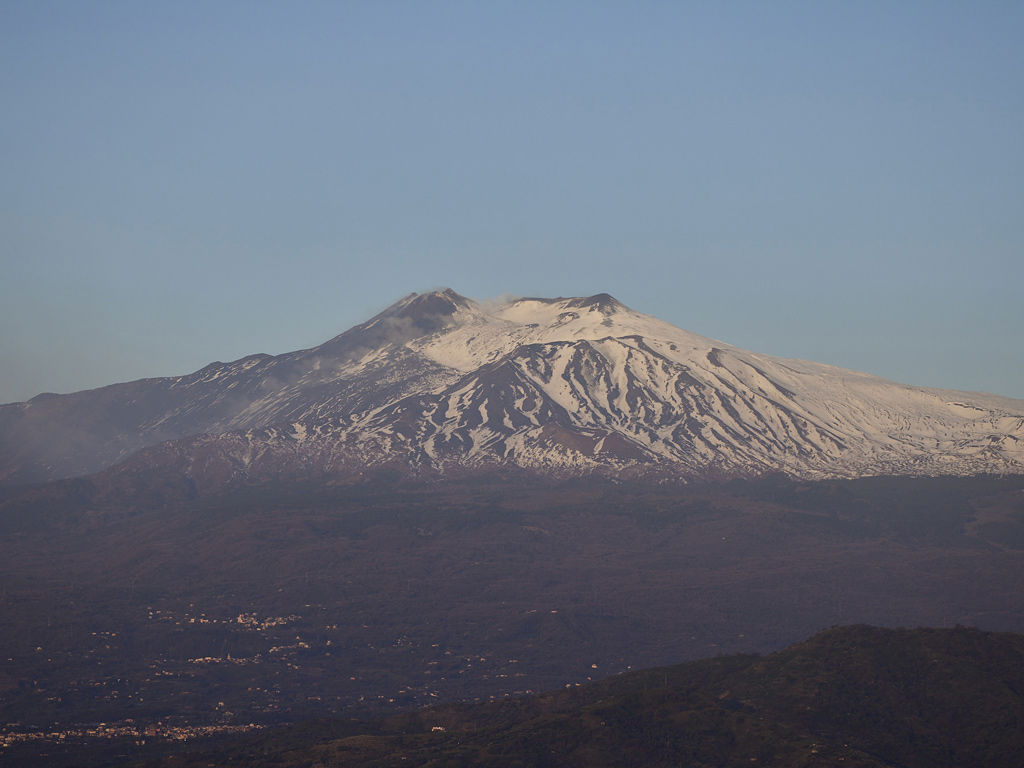
Noto, in the heart of the Sicilian Noto Valley, is the capital of Sicilian Baroque and certainly deserves to be included in your tour, leaving from the 5-star Boutique Hotel Palazzo Vecchio Taormina.
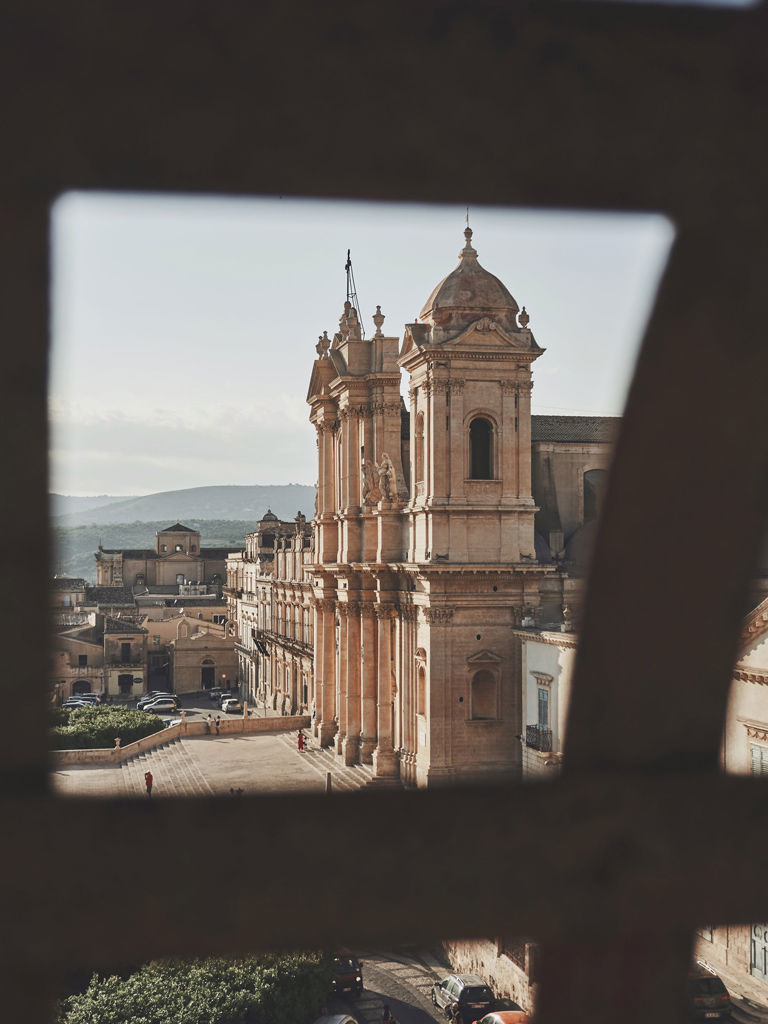
The history of Ragusa Ibla unfolds majestically at every step through winding alleys and endless stairways that will transport you to a universe that seems to have been frozen in time.
